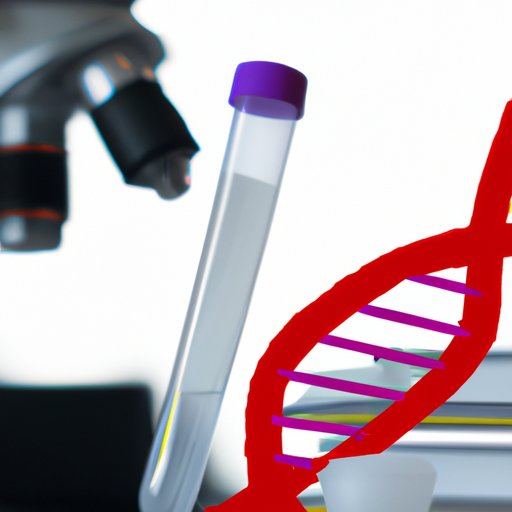Introduction
DNA stands for deoxyribonucleic acid and is a molecule that contains genetic information. It is found in nearly all living organisms and is responsible for passing on inherited traits from one generation to the next. In recent years, DNA has become an invaluable tool in forensic science. It is used to identify suspects, link victims to perpetrators, and exonerate innocent people.

Exploring the Role of DNA in Forensic Science
DNA analysis has revolutionized the way law enforcement agencies investigate crimes. By examining the unique sequences of DNA found in biological samples such as hair, saliva, and blood, investigators can determine with near certainty who was present at a crime scene. For example, a DNA sample taken from a piece of clothing found at a crime scene can be compared with a suspect’s DNA to determine whether they were present.
The basics of DNA in forensic science involve collecting, preserving, and analyzing biological evidence. Biological evidence must be collected correctly and preserved carefully to ensure that it is not contaminated or degraded. Once collected, the DNA must be extracted from the sample and analyzed using sophisticated laboratory techniques.
DNA analysis techniques in forensics include restriction fragment length polymorphism (RFLP), polymerase chain reaction (PCR), and short tandem repeat (STR) analysis. RFLP involves cutting DNA into smaller fragments and examining the differences between them. PCR is used to amplify small amounts of DNA so that it can be more easily examined. STR analysis involves looking at the repeating patterns of certain genetic markers.
The Impact of DNA in Courtroom Proceedings
DNA evidence can have a powerful impact on courtroom proceedings. It is often used to prove guilt or innocence beyond a reasonable doubt. However, it is important to understand the benefits and limitations of DNA testing. While DNA evidence can be extremely accurate, there are potential pitfalls such as contamination and misinterpretation of results.
Advances in DNA technology have enabled forensic scientists to analyze smaller samples and obtain much faster results. For example, new methods such as rapid DNA analysis allow investigators to process DNA samples in just two hours. This technology is increasingly being used to help identify unknown victims of crime, such as those found in mass graves.
Conclusion
DNA is an invaluable tool in forensic science. It can be used to identify suspects, link victims to perpetrators, and exonerate innocent people. DNA analysis techniques such as RFLP, PCR, and STR analysis allow forensic scientists to accurately analyze biological evidence. Advances in DNA technology have also enabled faster processing of DNA samples. DNA evidence can play a crucial role in determining guilt or innocence in court proceedings, but it is important to understand the benefits and limitations of DNA testing.
(Note: Is this article not meeting your expectations? Do you have knowledge or insights to share? Unlock new opportunities and expand your reach by joining our authors team. Click Registration to join us and share your expertise with our readers.)
